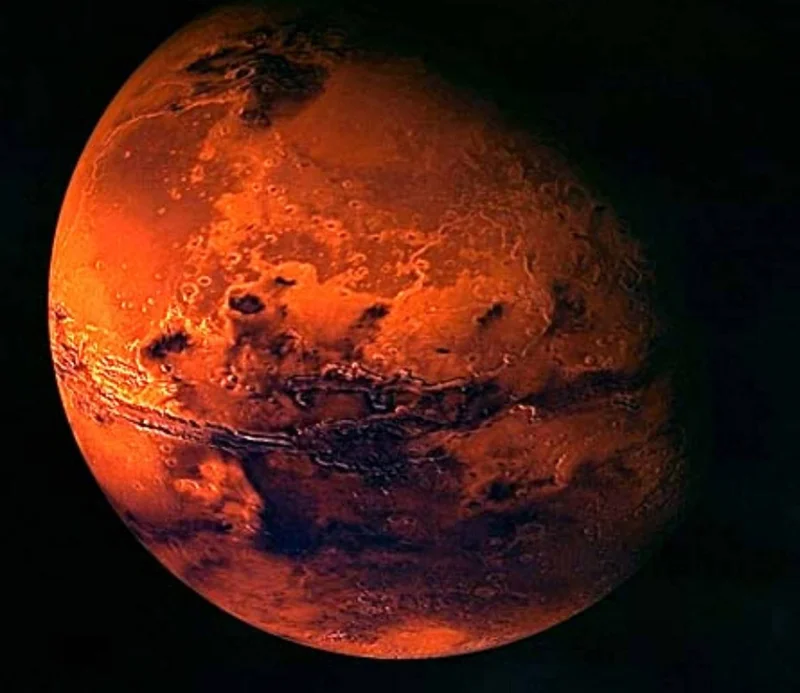Article Directory
Title: NASA's Martian Meteorite Find: Proof the Universe is Delivering Itself to Us
Okay, folks, buckle up, because NASA just handed us another reason to be absolutely thrilled about the future. Perseverance, our trusty little Martian rover, has stumbled upon something truly extraordinary: a space rock, a meteorite named Phippsaksla, chilling out in the Jezero Crater. And this isn't just any old rock; it's a visitor from beyond Mars, a cosmic traveler made of iron and nickel, likely forged in the heart of a long-lost asteroid.
Now, I know what some of you might be thinking: "So what? It's just a rock." But hear me out. This discovery, while seemingly small, is monumental. It's not just about finding a meteorite; it's about what that meteorite represents. It’s a tangible reminder that the universe is constantly interacting, exchanging pieces of itself across vast distances. It's like the universe is delivering itself, piece by piece, right to our doorstep—or in this case, right to the rusty plains of Mars.
A Cosmic Delivery Service
Think about it: For years, we’ve been sending probes and rovers out into the cosmos, searching, exploring, reaching. But here, the universe has met us halfway. Phippsaksla is a gift, a package delivered across interplanetary space, containing clues about the early solar system, the formation of asteroids, and maybe even the very building blocks of life.
And the fact that Perseverance, after all this time, is just now finding its first iron-nickel meteorite? It’s almost poetic. Previous rovers like Curiosity and Opportunity have found these metallic fragments scattered across the Martian surface, but Perseverance, our most advanced explorer yet, gets this. It’s as if the universe was waiting for the right moment, the right set of eyes, to reveal this particular treasure.
Perseverance used its SuperCam instrument, you know, that awesome laser and spectrometer combo, to analyze Phippsaksla’s chemistry. And the results? Sky-high iron and nickel content. Bingo. This thing's an out-of-towner. But what does that mean?
Well, iron-nickel meteorites are typically formed from the cores of massive asteroids. In the early days of the solar system, when everything was a swirling mess of dust and gas, heavy minerals sank into the hearts of these heated rocks. Over billions of years, these asteroids collided, broke apart, and sent fragments hurtling through space. Phippsaksla is one of those fragments, a piece of a long-lost world, now resting on the surface of Mars. It's like finding a time capsule from the solar system's infancy, a tangible link to our cosmic origins.
What I think is so amazing, is the location. Phippsaksla sits atop impact-formed bedrock outside Jezero Crater. This is HUGE. Why? Because its location could offer clues about how the rock formed and how it ended up there. The team is continuing to study Phippsaksla’s unusual makeup to confirm whether it truly came from beyond Mars. When I first heard about that, I knew I had to write about it.

This reminds me of the invention of the printing press. Before Gutenberg, knowledge was scarce, locked away in monasteries and universities. The printing press democratized information, spreading ideas like wildfire and ushering in the Renaissance. Phippsaksla, in its own way, is doing something similar. It’s democratizing cosmic knowledge, bringing the secrets of the universe closer to us, one Martian rock at a time.
Of course, with every great discovery comes great responsibility. As we unlock the secrets of Mars and the solar system, we must remember to tread carefully, to protect these alien landscapes, and to use our knowledge wisely. We can't just waltz in and strip-mine another planet, right?
But imagine what we could learn from this rock. Imagine the insights it could provide into the formation of planets, the evolution of asteroids, and the potential for life beyond Earth. What if Phippsaksla holds clues to resources that could help us colonize Mars? What if it contains unique elements that could revolutionize our technology? The possibilities are endless.
And let's not forget the bigger picture. Perseverance isn't just finding rocks; it's collecting samples for a potential return to Earth. These samples, including pieces of rocks like Cheyava Falls, could hold the key to unlocking the mysteries of Martian life. But the Mars Sample Return mission is currently facing funding challenges. As NASA’s Mars Sample Return Mission in Jeopardy as U.S. Considers Abandoning Retrieval put it, Cheyava Falls’s ride to our planet might have fallen through, with the Trump administration proposing canceling the return portion of the endeavor.
But I’m not worried. I believe that humanity's thirst for knowledge will prevail. We will find a way to bring these samples home, and when we do, the discoveries will be earth-shattering, literally. (I had to!)
Here's what really excites me: This is just the beginning. Perseverance is still out there, trundling across the Martian landscape, searching for more clues, more treasures, more pieces of the cosmic puzzle. And who knows what it will find next? Another meteorite? Evidence of past life? A hidden oasis? The possibilities are as vast as the universe itself.
The Universe is Speaking to Us!
This discovery is a powerful reminder that we are not alone, that we are part of something much larger than ourselves. It's a call to keep exploring, keep searching, keep reaching for the stars. Because the universe is out there, waiting to be discovered, waiting to share its secrets. And with every new find, with every new rock, we get one step closer to understanding our place in the cosmos.
